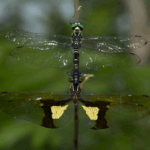Dragonflies are predatory insects belonging to the order Odonata. They have existed for nearly 300 million years, making them some of the earliest winged insects to evolve. With a diverse habitat, dragonflies are found on every continent except Antarctica. There are about 5,000 species of dragonflies, exhibiting a variety of colors and sizes. Known for their remarkable flying abilities, some species can reach speeds up to 35 miles per hour. These insects can fly in any direction, including backward, thanks to their unique wing structure.
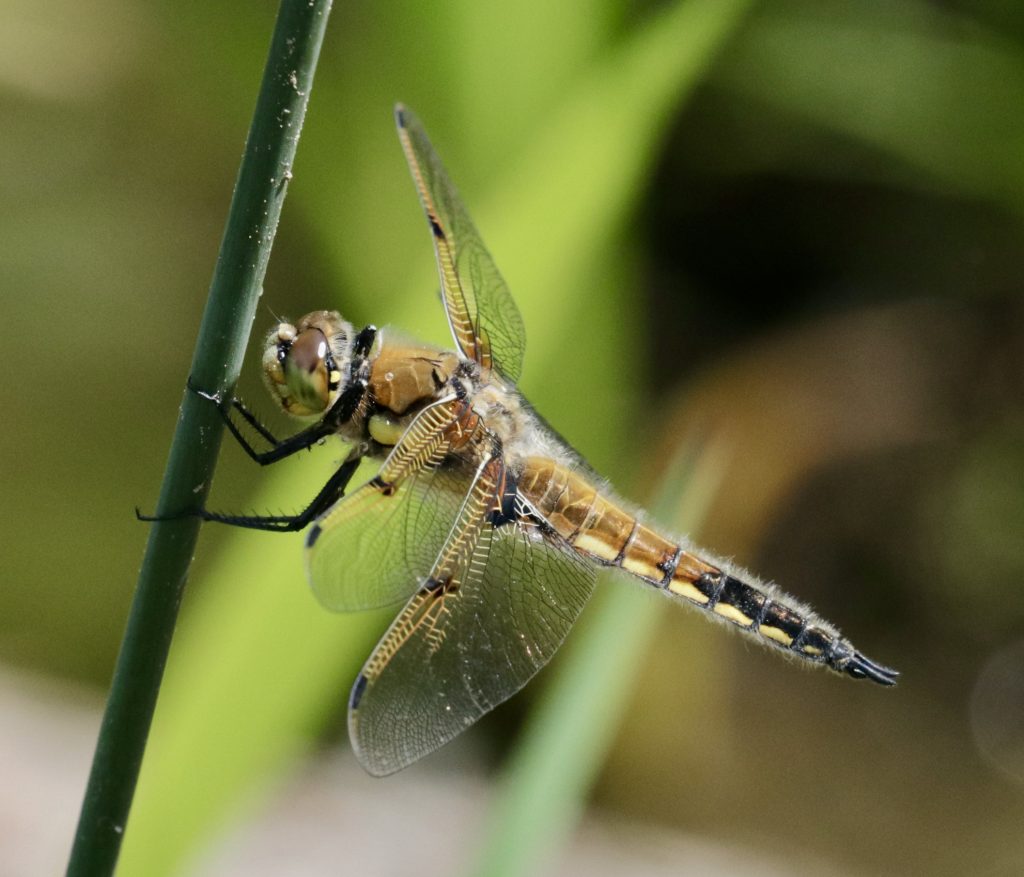
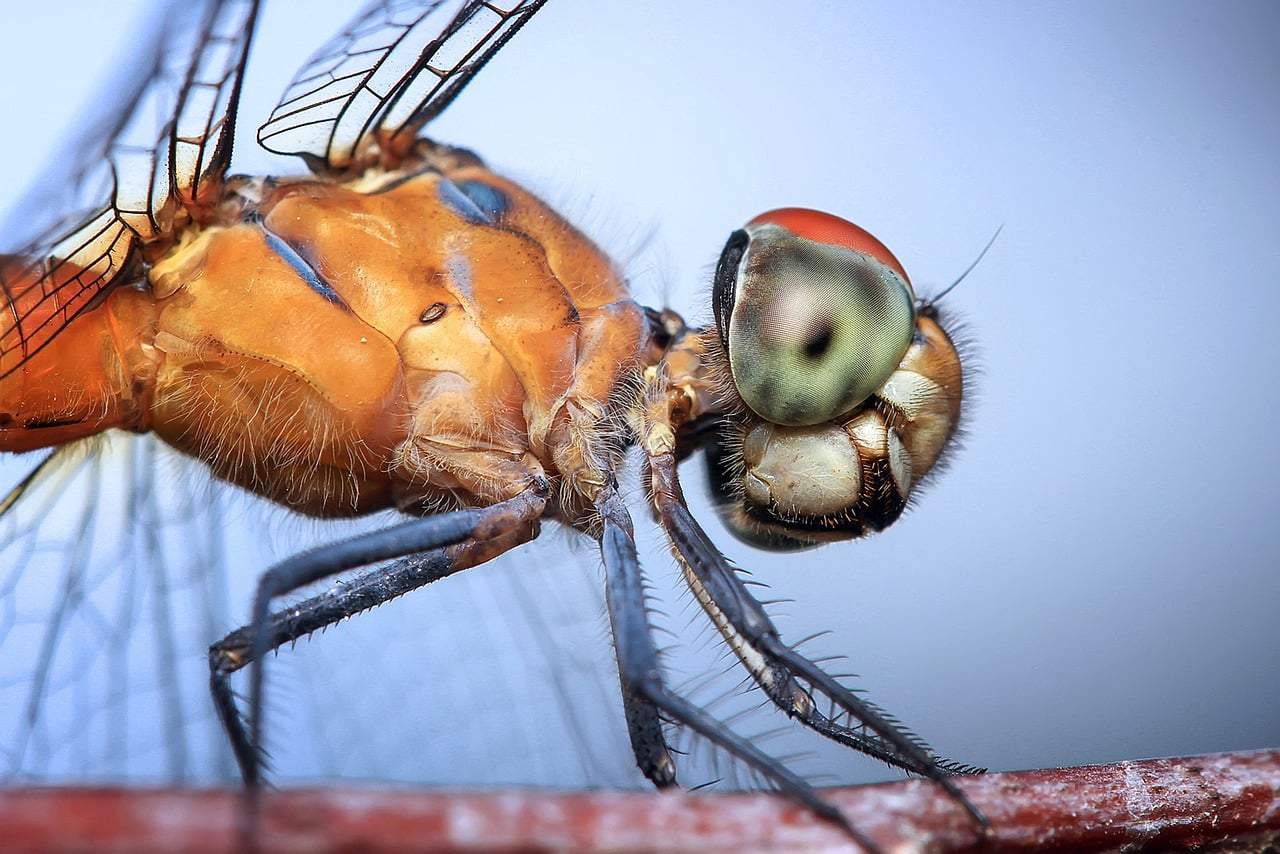
Anatomy and Flight
Dragonflies are characterized by their long bodies and two pairs of intricately veined, membranous wings. These wings, generally transparent, may have colored markings. Unlike damselflies, which hold their wings vertically, dragonflies rest with their wings spread horizontally. They have large, bulging eyes that occupy most of their head, providing nearly 360-degree vision.Dragonflies are powerful and agile fliers. Their wing muscles need to be warm to function optimally, so they often bask in the sun or engage in wing-whirring to generate heat before taking flight. Their speed and agility make them effective aerial predators, typically hunting small flying insects.
Life Cycle
The life cycle of a dragonfly consists of several stages: egg, nymph, and adult. Females lay eggs in or near water. The eggs hatch into nymphs, which live underwater for months to years, depending on the species. Nymphs are predatory, feeding on aquatic insects, tadpoles, and small fish. They use a specialized anatomical structure called the “mask” to seize prey.As nymphs grow, they molt multiple times. Eventually, they crawl out of the water and molt one last time, emerging as adult dragonflies. The adult stage is much shorter, typically lasting a few months. Adults focus on reproduction and hunting flying insects.
Ecological Role
Dragonflies play a crucial role in the ecosystem. As predators, they help control insect populations, including mosquitoes. They also serve as prey for birds, fish, and other wildlife. Their presence indicates a healthy ecosystem, as they require stable oxygen levels and clean water to thrive.
The Fascinating World of Dragonflies – One of Our Most Aerodynamic Insects
Dragonflies (and Damselflies) are some of the most fascinating and beautiful insects in the world. With their vibrant colours, incredible flying abilities, and complex life cycles, dragonflies can captivate the imagination and have earned their place as one of nature’s most astonishing creatures. This article explores some of the remarkable attributes and intriguing facts about dragonflies, that account for why I find them so amazing.
Ancient Lineage and Evolution
Dragonflies belong to the order Odonata, which is divided into two suborders: Anisoptera (true dragonflies) and Zygoptera (damselflies). They are among the oldest insects, with a lineage tracing back over 300 million years to the Carboniferous Period, and as such they predate the dinosaurs. Fossil records reveal that prehistoric dragonflies, such as the genus Meganeura, had wingspans of up to 70 centimetres (27.5 inches), making them some of the largest insects ever to have existed, as well as amongst the earliest winged insects to evolve. Modern dragonflies, although smaller, still exhibit remarkable evolutionary adaptability, as well as very proficient predatory skills, that have allowed them to thrive for millions of years.
Breathtaking Diversity
There are over 5,000 known species of dragonflies, each exhibiting unique colours, patterns, and behaviours. They can be found in almost every part of the world, from tropical rainforests to temperate regions. The diversity in coloration among dragonfly species is not just for aesthetic appeal; it often plays a role in thermoregulation, camouflage, and mating displays.
Male dragonflies are particularly known for their territorial behavior. They often patrol and defend their chosen breeding sites, engaging in aerial battles with rival males. These encounters are not just about securing a mate but also about ensuring the safety and suitability of the breeding environment.
Exceptional Flight Abilities
Dragonflies are unparalleled aviators in the insect world. Their flight capabilities are complex and highly efficient, allowing them to:
Hover Like Helicopters
Dragonflies can hover in place, thanks to their ability to move each of their four wings independently. This capability is crucial for hunting and evading predators.
Fly Backwards
Few insects can fly backward, but dragonflies can, using rapid wingbeats to change direction instantly.
Reach Impressive Speeds
Some species, such as the Southern Giant Darner, can fly at speeds up to 30 miles per hour (48 kilometres per hour), making them one of the fastest insects.
Perform Aerobatic Manoeuvres
Their agility in the air is unmatched. Dragonflies can execute sharp turns, loops, and sudden dives with precision, which is essential for capturing prey.
Dragonflies’ flight mechanics are so advanced that they have inspired modern drone technology (a process called ‘biomimicry’. Researchers study their flight to develop more efficient and agile flying robots. The intricacies of dragonfly flight involve complex aerodynamics, including the ability to create vortices with their wings to generate lift and thrust.
Voracious Predators
Dragonflies are apex predators in the insect world, primarily feeding on mosquitoes, flies, and other small insects. Their predatory efficiency is remarkable, with a success rate in capturing prey of about 95%. This is largely due to their highly developed visual and neurological systems, but they are also equipped with sharp mandibles and a unique prey capture technique. A dragonfly will snatch its prey mid-flight using its legs, which are covered with tiny spines that form an effective trap. Once a dragonfly spots its prey, it uses an ‘interception’ strategy, where it predicts the prey’s flight path and intercepts it mid-air. This method of hunting is more akin to a fighter jet locking onto a target than the kind of random pursuit seen in many other predators.
Their predatory prowess extends to their larval stage as well. Dragonfly larvae, known as nymphs, are aquatic and equally formidable hunters. They possess extendable jaws that shoot out to capture unsuspecting prey, such as small fish, tadpoles, and other aquatic insects. The nymph stage can last several years, depending on the species, during which they moult multiple times before emerging as adults (but more about that later).
Remarkable Eyesight
Dragonflies have some of the most sophisticated eyes in the animal kingdom. Their large, compound eyes provide nearly 360-degree vision and are composed of up to 30,000 ommatidia (individual visual units). This extensive visual field allows them to detect movement and colour changes with incredible accuracy, crucial for hunting and avoiding predators. They can also perceive ultraviolet light, which is invisible to the human eye, enhancing their ability to detect movement and colour. Additionally, their brain processes visual information incredibly quickly, enabling them to react and adjust their flight paths instantaneously.
Life Cycle and Metamorphosis
The life cycle of a dragonfly consists of three main stages: egg, nymph (larva), and adult. This metamorphosis is not only complex but also quite fascinating:
Egg Stage
Female dragonflies lay their eggs in or near water. Depending on the species, eggs can hatch in a few days or take several weeks.
Nymph Stage
The nymph stage is aquatic, and dragonfly nymphs are voracious predators, feeding on small aquatic organisms, tadpoles, and even small fish. This stage can last from a few months to several years, depending on the species and environmental conditions.
Nymphs undergo a series of moults as they grow, eventually emerging from the water to transform into adult dragonflies. This metamorphosis can be a dramatic and visually striking process.
Adult Stage
The adult dragonfly emerges from its exoskeleton in a process called ecdysis, pumps blood into its wings, and after a period of drying and hardening, takes to the skies. Newly emerged adult dragonflies are termed ‘tenerals’. The adult phase is predominantly dedicated to reproduction, and adult dragonflies often display striking colours and elaborate courtship behaviours.
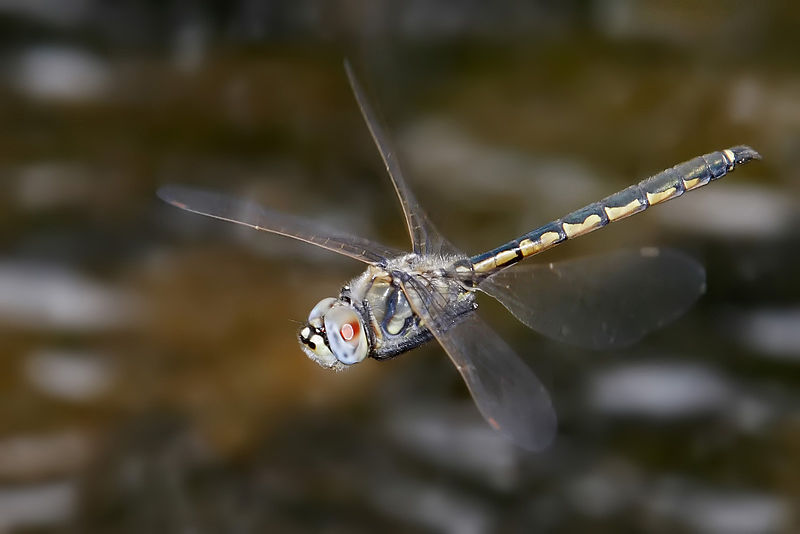
Some Fascinating Facts …
Mating Wheels
Dragonflies have a unique mating process known as the ‘mating wheel’, where the male grasps the female by the head or thorax using specialised claspers. The female then curls her abdomen to connect with the male’s secondary genitalia to receive sperm.
Wing Flexibility
The wings of dragonflies are very delicate, but very effectively strengthened by a network of veins and membranes, making them both strong and flexible. This structure allows them to withstand the rigours of high-speed flight and aerial combat.
Thermoregulation
Dragonflies can regulate their body temperature by adjusting their position relative to the sun. In cooler weather, they may bask in the sun to warm up, while in hotter conditions, they can orient their bodies to minimise solar exposure.
Migratory Species
Some dragonfly species, like the Globe Skimmer (Pantala flavescens), undertake long migratory journeys across oceans and continents, traveling thousands of miles.
Ecological Importance
Dragonflies are vital indicators of environmental health. Since they rely on clean bodies of water for breeding, their presence or absence can signal the quality of the habitat. Their role as predators also helps control the populations of pest insects, such as mosquitoes, thus contributing to the balance of ecosystems and reducing many insect-borne diseases such as malaria.
Moreover, dragonflies are important to the food cycle, as birds, frogs, and some other predators rely on them as a food source. Their complex life cycle, involving both aquatic and terrestrial environments, also means that they play a role in nutrient cycling between these two ecosystems.
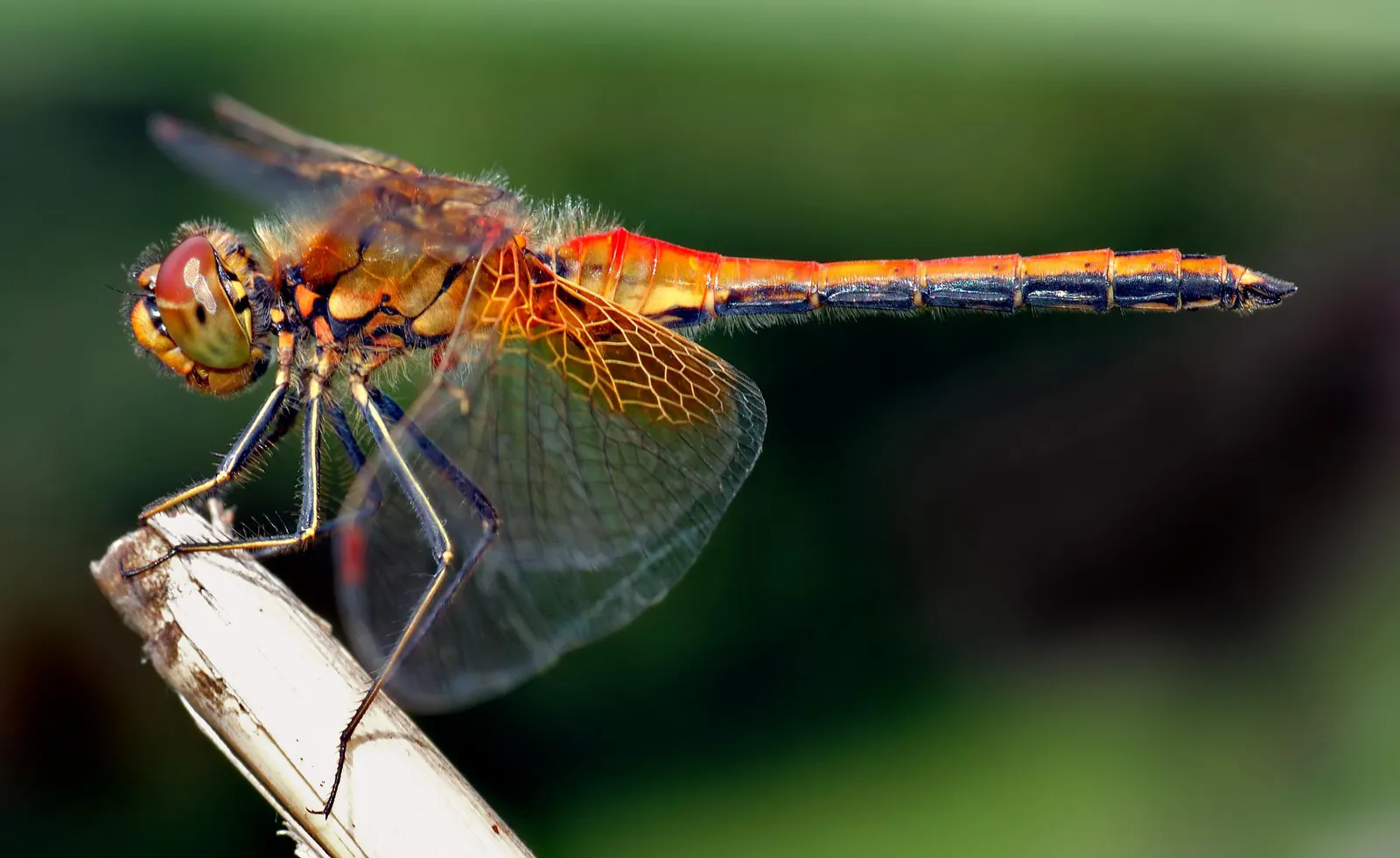
Cultural Significance and Symbolism
Throughout history, dragonflies have held various cultural significances. In many cultures, they are symbols of change, transformation, and adaptability. In Japan, dragonflies are considered symbols of courage, strength, and happiness. Native American tribes often view them as representations of swiftness and activity. Their ethereal beauty and dynamic flight have inspired countless works of art, literature, and folklore.
Migration and Behavior
Some dragonfly species, like the globe skimmer (Pantala flavescens), undertake long migrations. The globe skimmer’s annual journey spans about 11,000 miles, making it the longest migration of any insect.Dragonflies are territorial, especially males, who defend breeding territories. These territories often contain desirable features like sunlit stretches of shallow water or specific plant species. Dragonflies use landmarks to define territory boundaries and may engage in aerial dogfights or high-speed chases to defend their space.
Mating and Reproduction
Dragonflies exhibit a unique mating posture known as the “wheel” or “heart” position. Males transfer sperm to secondary genitalia before grasping the female behind her head. The female then curls her abdomen to meet the male’s secondary genitalia. After mating, females lay eggs in water or on vegetation near water.
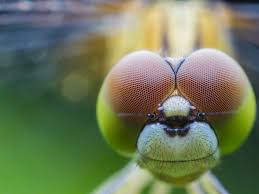
Fun Facts
- Ancient Insects: Dragonflies have existed for around 300 million years.
- Diverse Species: There are over 5,000 species of dragonflies.
- Remarkable Vision: Nearly all of a dragonfly’s head is eye, providing almost 360-degree vision.
- Expert Fliers: Dragonflies can fly in any direction, hover, and even mate mid-air.
- Predatory Efficiency: They catch their prey with their feet and are highly efficient hunters.
- Long Migrations: Some species, like the globe skimmer, migrate thousands of miles.
- Ecological Indicators: Their presence indicates a healthy ecosystem.
- No Sting: Dragonflies do not sting; they use their flying skills to catch prey.
How do dragonflies’ flying abilities compare to those of other insects
Comparing Dragonflies’ Flying Abilities to Other Insects
Dragonflies are renowned for their exceptional flying abilities, which set them apart from other insects. Their unique anatomical and aerodynamic features enable them to perform complex aerial maneuvers with remarkable precision. This article delves into the specifics of dragonfly flight and compares it to the flight abilities of other insects.
Anatomy and Wing Structure
Dragonflies belong to the order Odonata, which also includes damselflies. One of the most distinctive features of dragonflies is their two pairs of wings, which operate independently. This independence allows for fine control and mobility, enabling abrupt changes in direction and speed. Each wing is controlled by separate muscles, providing dragonflies with the ability to hover, glide, and perform rapid turns with ease.In contrast, many other insects have a different wing structure and flight mechanism. For instance, insects like bees and flies use an indirect flight mechanism where the muscles do not attach directly to the wings but to the thorax. This setup allows for rapid wingbeats but does not offer the same level of control as dragonflies’ direct flight mechanism.
Aerodynamics and Flight Mechanics
Dragonflies utilize a combination of aerodynamic principles to achieve their impressive flight capabilities. They can generate lift and thrust through the leading-edge vortex, a phenomenon where air flows over the wing’s leading edge, creating a vortex that enhances lift. This mechanism, combined with their ability to adjust the angle of attack and wing orientation, allows dragonflies to maintain optimal flight efficiency and maneuverability.Other insects also use aerodynamic principles but often rely on different mechanisms. For example, butterflies and moths employ a “clap and fling” technique where their wings clap together at the top of the stroke and fling apart, creating additional lift. While effective, this method does not provide the same level of control and agility as the dragonfly’s flight mechanics.
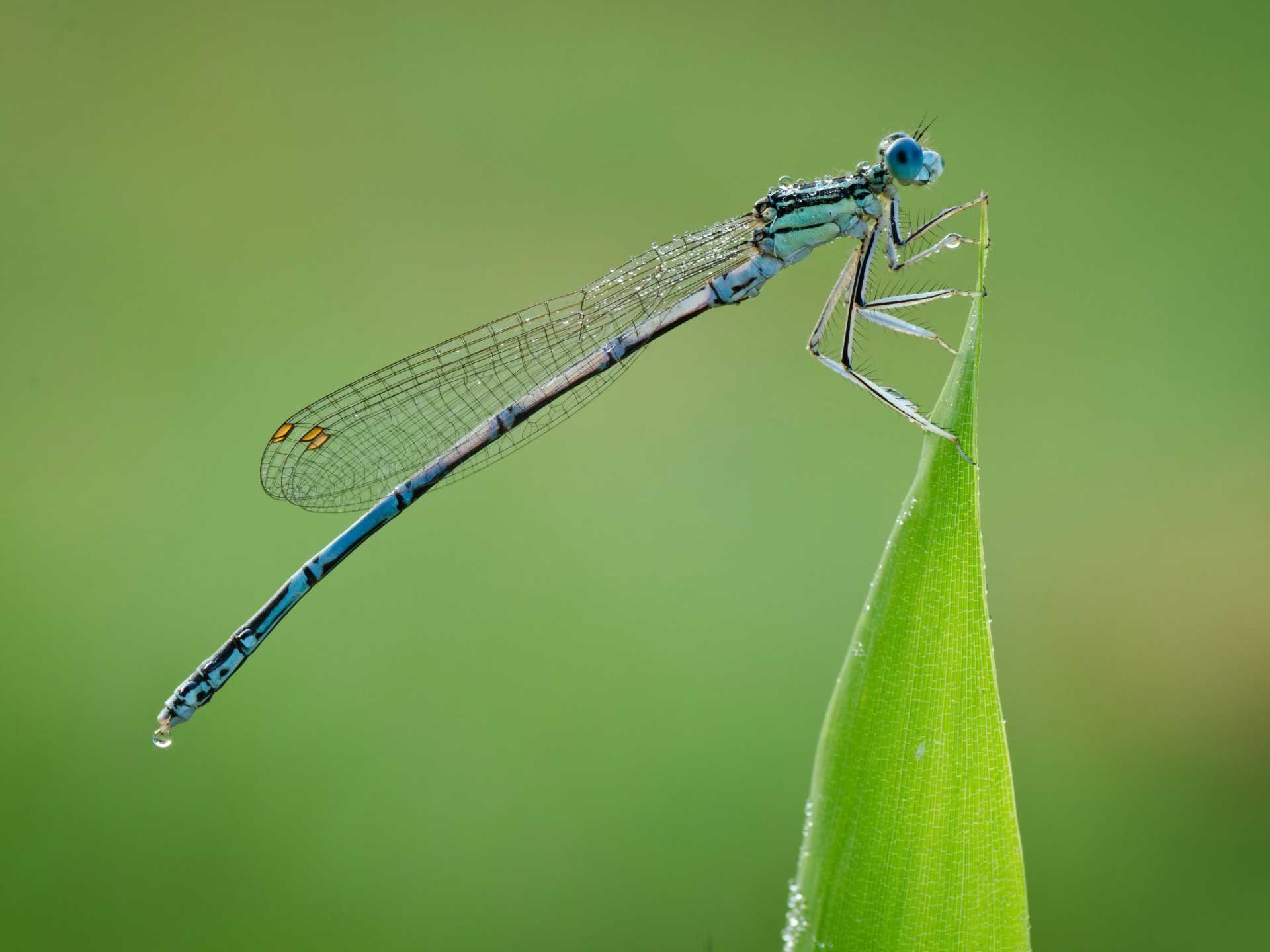
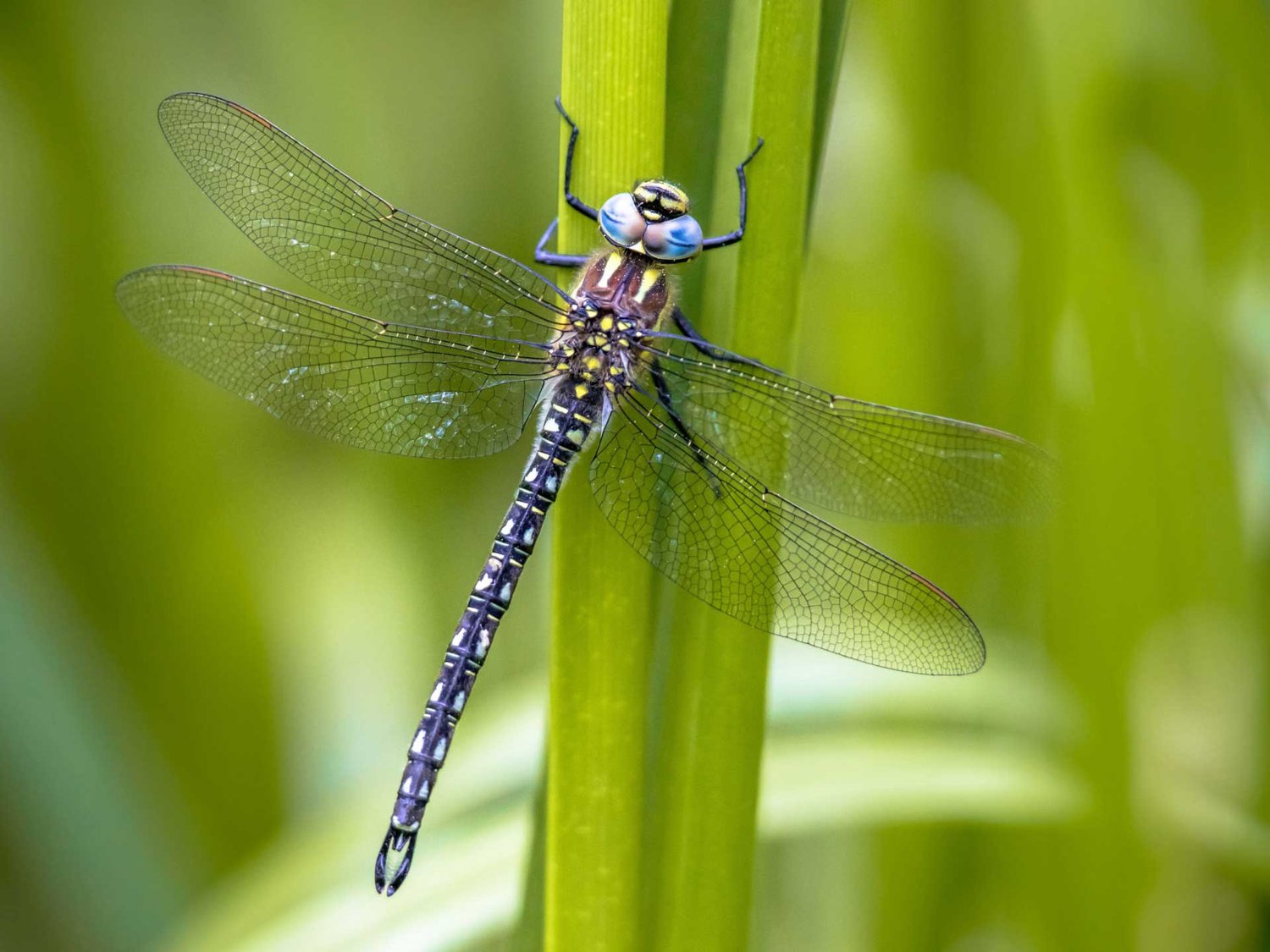
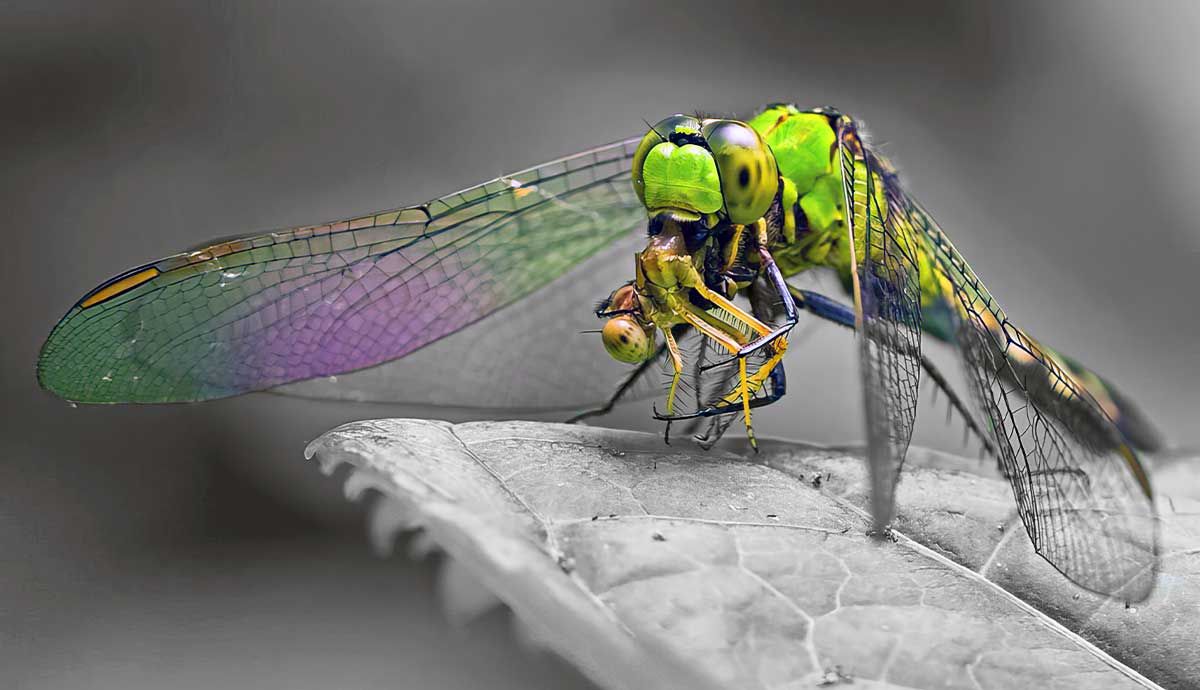
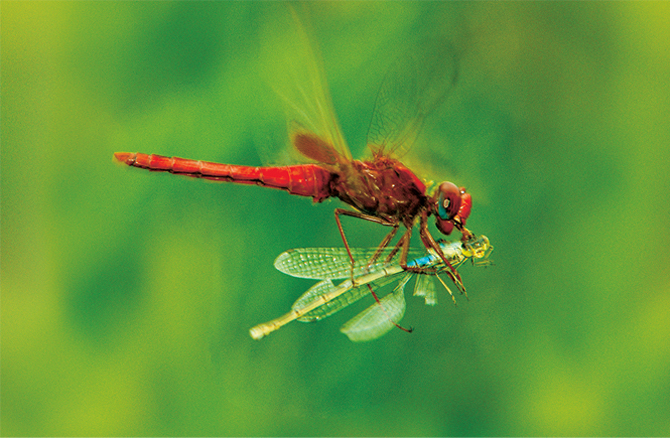
Speed and Agility
Dragonflies are among the fastest flying insects, capable of reaching speeds up to 35 miles per hour. Their agility is further enhanced by their ability to hover, fly backward, and make sharp turns. This agility is crucial for their predatory lifestyle, allowing them to catch prey mid-air with high efficiency.When comparing flight speeds, dragonflies outpace many other insects. For instance, a honeybee flaps its wings at about 230 beats per second but only achieves speeds of around 2.5 meters per second. In contrast, dragonflies can reach speeds of 7 meters per second with a wingbeat frequency of 38 beats per second, highlighting their superior speed and efficiency.
Sensory Feedback and Control
Dragonflies possess nearly 360-degree vision due to their large, compound eyes, which is essential for detecting and capturing prey. This extensive visual field, combined with their ability to process visual information rapidly, allows them to make quick adjustments during flight. Sensory feedback from their wings and other sensory structures helps maintain flight stability and control.Other insects also rely on sensory feedback for flight control but may not have the same level of visual acuity. For example, flies have halteres—small, club-like structures that provide feedback on body orientation and help stabilize flight. While effective, this system does not offer the same level of precision as the dragonfly’s visual and sensory integration.
Comparative Flight Performance
The table below summarizes the flight parameters of various insects, highlighting the differences in speed and wingbeat frequency:
| Insect | Speed (m/s) | Wingbeat Frequency (beats/s) |
|---|---|---|
| Dragonfly (Aeshnid) | 7.0 | 38 |
| Hornet | 5.7 | 100 |
| Hummingbird Hawk Moth | 5.0 | 85 |
| Horsefly | 3.9 | 96 |
| Hoverfly | 3.5 | 120 |
| Bumblebee | 2.9 | 130 |
| Honeybee | 2.5 | 250 |
| Housefly | 2.0 | 190 |
| Damselfly | 1.5 | 16 |
| Scorpionfly | 0.49 | 28 |
| Large White Butterfly | 2.5 | 12 |
| Thrips (Clap and Fling) | 0.3 | 254 |
From the table, it is evident that dragonflies have a unique combination of high speed and relatively low wingbeat frequency, which contributes to their efficient and agile flight.
Conclusion
Dragonflies’ flying abilities are unparalleled among insects due to their unique wing structure, direct flight mechanism, and sophisticated aerodynamic principles. Their speed, agility, and precision make them formidable aerial predators. While other insects have evolved various flight mechanisms and adaptations, dragonflies stand out for their exceptional control and efficiency in the air. Understanding these differences not only highlights the diversity of insect flight but also underscores the evolutionary adaptations that have enabled dragonflies to thrive as aerial hunters.
The fascinating world of dragonflies showcases their incredible evolutionary history, diverse species, and vital ecological roles. These ancient insects continue to captivate scientists and nature enthusiasts alike with their remarkable flying abilities, predatory efficiency, and ecological significance. Whether hovering over a pond or darting through the air, dragonflies are a testament to the wonders of nature.


